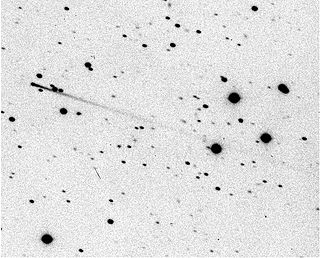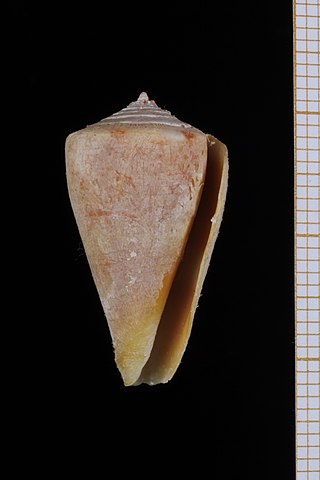
Castalia, in ancient Greek and Roman literature,. was the name of a spring near Delphi, sacred to the Muses; it is also known as the Castalian Spring. It is said to have derived its name from Castalia, a naiad-nymph, daughter of the river-god Achelous, who is said to have flung herself into the spring when pursued by the god Apollo.

4769 Castalia is a near-Earth object and potentially hazardous asteroid of the Apollo group, approximately 1.4 kilometers in diameter and was the first asteroid to be modeled by radar imaging. It was discovered on 9 August 1989, by American astronomer Eleanor Helin (Caltech) on photographic plates taken at Palomar Observatory in California. It is named after Castalia, a nymph in Greek mythology. It is also a Mars- and Venus-crosser asteroid.

Comet Elst–Pizarro is a body that displays characteristics of both asteroids and comets, and is the prototype of active asteroids. Its orbit keeps it within the asteroid belt, yet it displayed a dust tail like a comet while near perihelion in 1996, 2001, and 2007.

A species that is extinct in the wild (EW) is one that has been categorized by the International Union for Conservation of Nature as only consisting of living members kept in captivity or as a naturalized population outside its historic range. Classification requires exhaustive surveys conducted within the species' known habitat with consideration given to seasonality, time of day, and life cycle. Once a species is classified as EW, the only way for it to be downgraded is through reintroduction.

Edentulina is a genus of air-breathing land snails, terrestrial pulmonate gastropod molluscs in the family Streptaxidae.
Gibbus is an extinct genus of air-breathing land snails, terrestrial pulmonate gastropod molluscs in the family Streptaxidae.
Trichotoxon martensi is a species of air-breathing land snail or semislugs, a terrestrial pulmonate gastropod mollusk in the family Helicarionidae. This species is endemic to Tanzania.

Megalophaedusa martensi is a species of medium-sized air-breathing land snail, a terrestrial pulmonate gastropod mollusk in the family Clausiliidae, the door snails, all of which have a clausilium.

Conus martensi is a species of sea snail, a marine gastropod mollusk in the family Conidae, the cone snails and their allies.
Clavatula martensi is a species of sea snail, a marine gastropod mollusk in the family Clavatulidae.
Ergalatax junionae is a species of sea snail, a marine gastropod mollusc in the family Muricidae, the murex snails or rock snails.

Ergalatax martensi is one of the most common and the historic species of sea snail, a marine gastropod mollusk in the family Muricidae, the murex snails or rock snails. Ergalatax Martensi are commonly found within the deep blue sea and some time it gets floated to sea sand due to sea level changes.

Ergalatax is a genus of sea snails, marine gastropod mollusks in the subfamily Ergalataxinae of the family Muricidae, the murex snails or rock snails.

Parmarion martensi is a species of air-breathing land semislug, a terrestrial pulmonate gastropod mollusk in the family Ariophantidae.

Filopaludina is a genus of freshwater snails with a gill and an operculum, aquatic gastropod mollusks in the family Viviparidae.

Filopaludina martensi is a species of large freshwater snail with a gill and an operculum, an aquatic gastropod mollusk in the family Viviparidae.
Latastia doriai, also known commonly as Doria's long-tailed lizard, is a species of lizard in the family Lacertidae. The species is endemic to the Horn of Africa. There are three recognized subspecies.

Castalia is a genus of bivalves belonging to the family Hyriidae.












